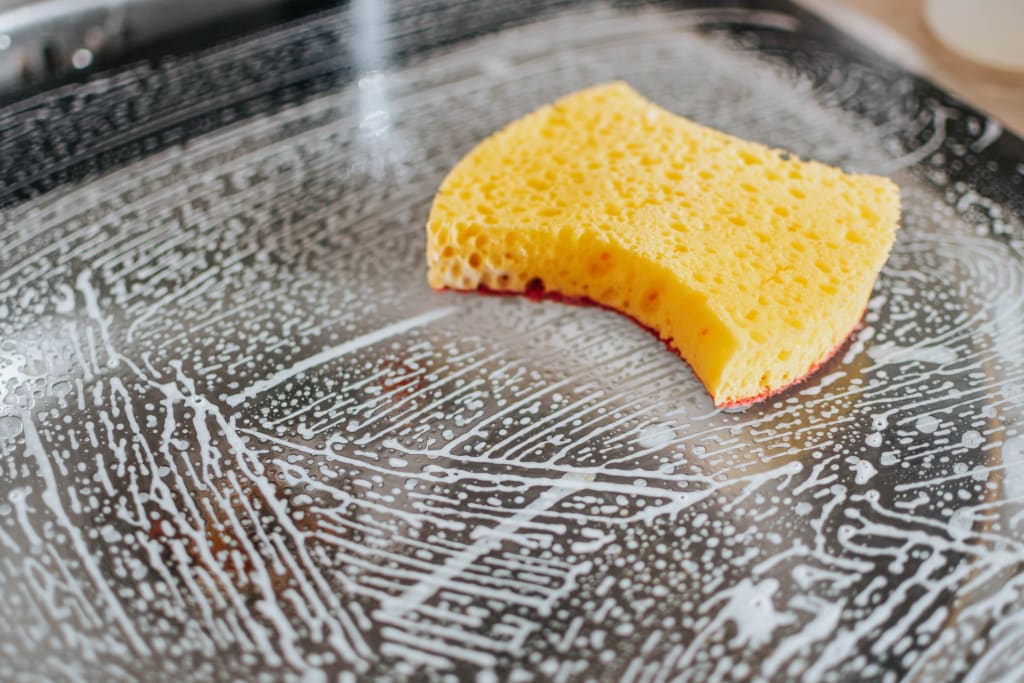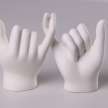An everyday item in your kitchen that creates an ideal environment for bacteria to thrive
What is it?

A new study reveals that an everyday item in your kitchen is home to more bacteria than the clear, cylindrical Petri dishes typically used as a laboratory tool.
The spatial division of a sponge, the way it is divided into different sizes, meets the needs of bacteria that prefer isolated environments and those around other organisms, making them the best haven for microbial communities, according to a study recently published in the journal Nature Chemical Biology.
Bacteria that thrive in secluded places, like the smaller holes of a sponge, won't "bully" other organisms for space, while larger holes allow microbes that depend on other bacteria to survive.
"It's like going to a party where people are going to enjoy massive interactions in the room with a lot of people, and they're going to derive energy from that, but there are also people who feel that they want to be able to do that," said senior study author Lingchung Yu, a professor of biomedical engineering at Duke University in North Carolina. be in a smaller environment.
While the findings may help you better understand why the kitchen sponge is a central habitat for germs, the goal of this research is to find a way to engineer diverse microbial communities that produce chemicals of medicinal or biotechnological value, Yu said.
To reach these results, the researchers tested the density and presence of E. coli in two different ways, and used plates with varying degrees of spatial stratification, ranging from six to 1,536 isolated holes.
The panels showed that the amount of cleavage in the voids had an effect on the type of bacteria that tended to thrive the most.
Then the researchers ran another experiment using a kitchen sponge and tube.
The results showed that in the sponge, Yu explained, "there are 60% more diverse bacteria than in a well-mixed environment."
"The degree of this spatial stratification plays an important role in maintaining the diversity of the microbial community," Yu said, adding, "The optimal degree of stratification could also depend on the nature of interactions in a given community (of bacteria)."
Overall, what they found is that environments that can provide a mixture of large rooms and small holes allow for more diverse microbial communities.
Since the sponge is an "ideal growth environment for microbes", Yu recommended consumers to "be vigilant" and replace the sponge periodically or find a way to sterilise it.
It is recommended that you replace the sponge weekly, according to a 2017 study published in the journal Scientific Reports.
To sterilise the bacteria on the sponge, the USDA suggests that consumers use microwave heating and a dishwasher and a drying cycle.
Slava Epstein, a professor of microbiology at Northeastern University, who was not involved in the study, said the findings provide an understanding of the microbial viewpoint where "distances vary greatly" from a human point of view.
Epstein explained that by studying the distance between cells, which is measured in microns, researchers can understand how the importance of scale affects microbial interactions.
microbial communities in nature
Epstein believed that a "natural extension" of this research would be to examine the role of spatial division in nature, such as how bacteria function in soil, since the bacteria used in the study were artificially grown and controlled by researchers.
Microorganisms are used in in situ microbial bio-degradation or bio-remediation of domestic, agricultural and industrial waste and sub-surface contamination in soils, sedimentary and marine environments. The ability of each microorganism to analyse toxic residues depends on the nature of each type of contamination. Since most sites typically possess multiple types of contaminants, the most effective method for microbial bio-degradation is to use a mixture of bacterial species and species, each designated for the bio-degradation of one or more contaminants. It is necessary to monitor the composition of the native and additive bacteria for the purpose of evaluating the activity level, authorising nutrient modifications and optimising conditions for the bio-process.
About the Creator
Enjoyed the story? Support the Creator.
Subscribe for free to receive all their stories in your feed. You could also pledge your support or give them a one-off tip, letting them know you appreciate their work.






Comments
There are no comments for this story
Be the first to respond and start the conversation.